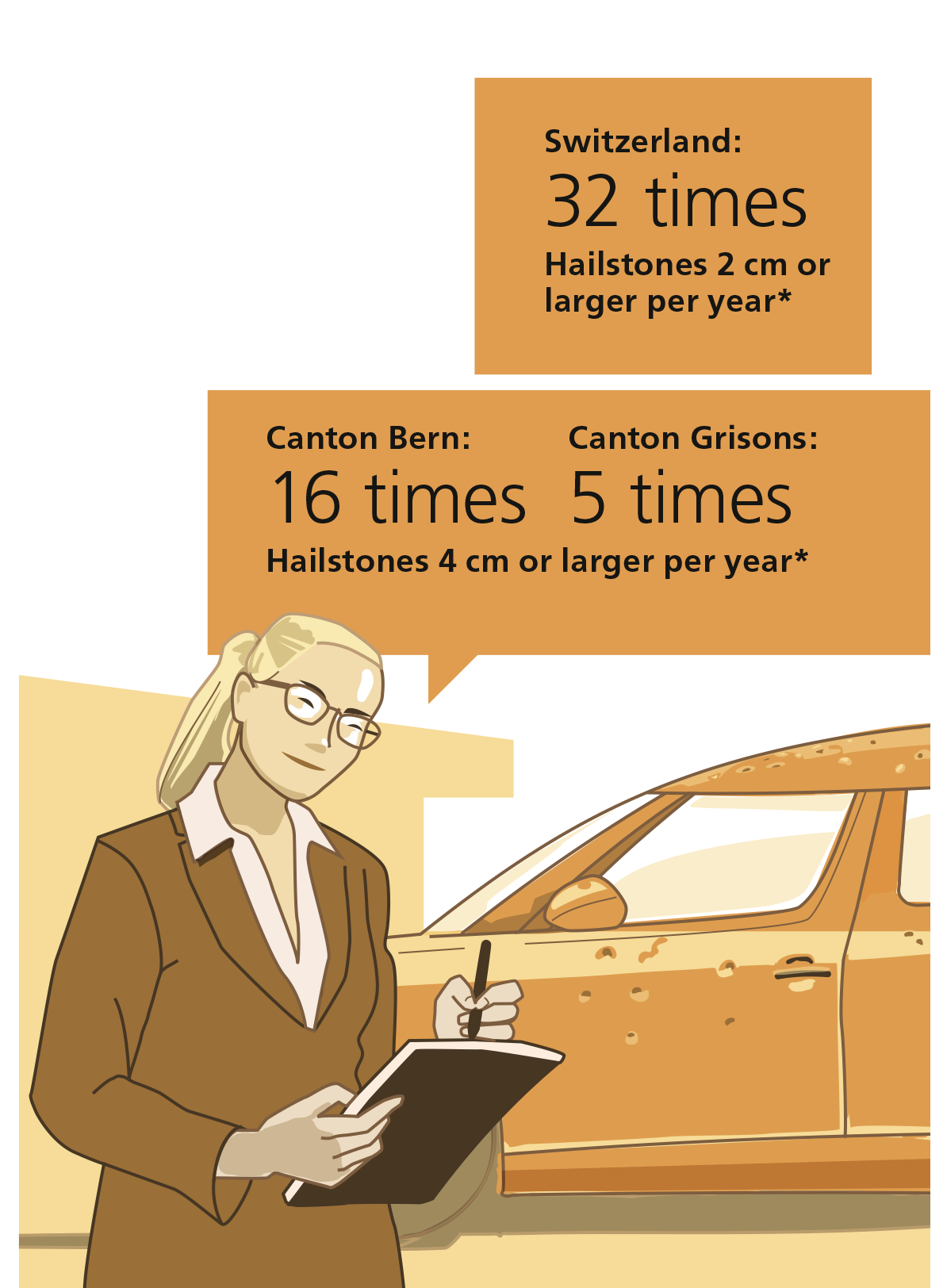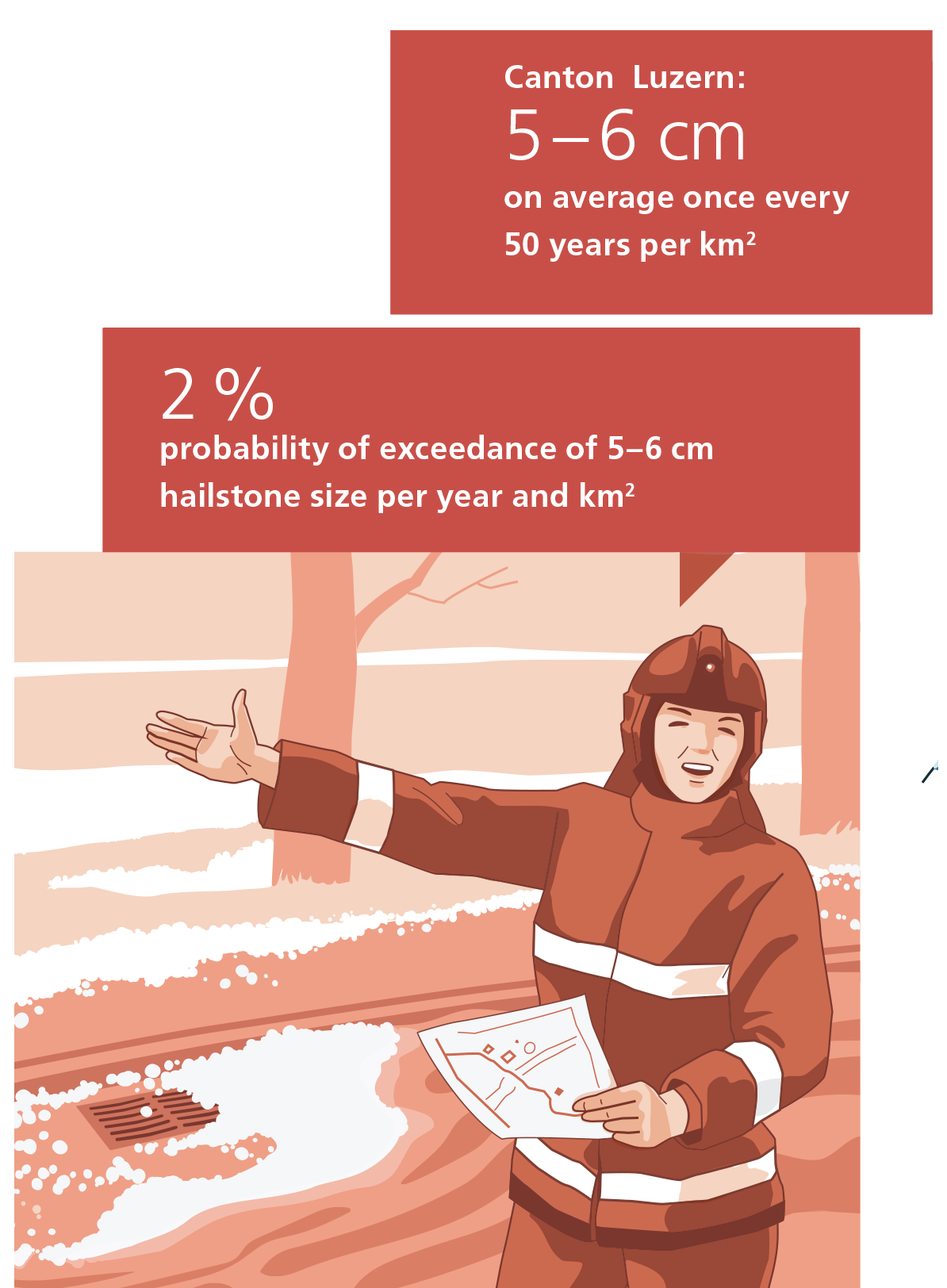Every year in Switzerland, hailstorms cause damages amounting to several million Swiss Francs; they thus represent one of the country’s greatest natural hazards. Existing principles for the assessment of hail risk are based on outdated datasets, use divergent methods, and can only be compared to one another to a limited extent. Therefore, a uniform national reference on hail hazards was developed within the framework of the NCCS priority theme “Hail Climate Switzerland”.
New Hail Products for Switzerland
The following products are available: information on hail frequency, hailstone sizes, and return periods. These products refer to the period of available radar hail data from 2002 to 2020 and will be updated monthly and annually with the latest data. The hail seasons for the summer half-year from April to September are covered. In addition, hail hazard maps provide the most precise data basis available in terms of time and location for the assessment of the risk of hail damage in all regions of Switzerland. In this way, those affected from the respective sectors can implement targeted measures to reduce or bear the risks associated with hail.
Project “Hail Climate Switzerland”
This project has been challenging in many ways. As a small-scale weather phenomenon, hail is difficult to measure systematically. The short data series complicate assertions about rare events, and the range of demands from the user sectors is extensive. For this reason, MeteoSwiss has reprocessed its archive of radar hail data, using innovative statistical methods to create national hail hazard maps. The bundled expertise of all those involved in the project and the close exchange with practitioners were of key importance in the implementation of this usage-oriented project. The new hail products describe the frequency and intensity of hail events in Switzerland and are freely available to anyone interested.
Project Partners
In the project “Hail Climate Switzerland”, various actors from the private and public sectors have come together under the leadership of the Federal Office of Meteorology and Climatology MeteoSwiss. By means of this collaboration, specialist knowledge from practice, administration, and research can be combined and focused, thus creating added value for users interested in hail information. This intensive cooperation benefits all project partners:
- Foundation for Prevention of the Public Insurance Companies for Real Estate FPPIRE
- Swiss Insurance Association SVV
- Swiss Hail Insurance Schweizer Hagel
- Swiss Society of Engineers and Architects SIA
- Federal Office of Meteorology and Climatology MeteoSwiss
- The Federal Office for the Environment FOEN
- Federal Office for Agriculture FOAG
- Federal Office for Civil Protection FOCP

Last modification 28.06.2023










